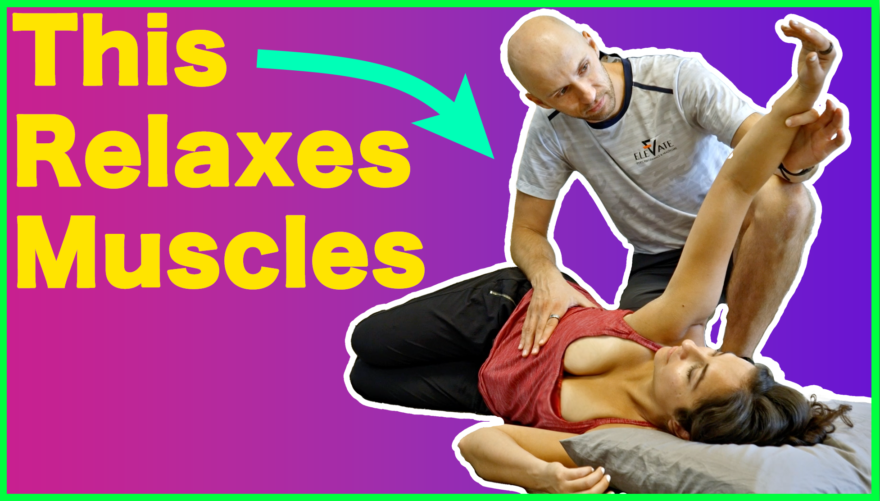Table of Contents
This move will reduce muscular tension throughout the body
Do you ever feel tightness or tension anywhere that foam rolling and stretching WON’T TOUCH?
Then maybe those things aren’t the answer. Maybe there is a different way.
A way that can reduce tension throughout your ENTIRE body.
That key? Learning to move without tension.
This post will teach you 5 exercises that will help you achieve this skill, and why it works.
The best part? I recruited Lucy Hendricks, an AMAZING trainer, to help show us how to do it.
Check it out below!
Sidelying position keys
Most of these movements will be in the sidelying position, and the most important thing about this position is the setup.
There are several key pieces to consider with this position.
First, make sure head, torso, and pelvis are stacked atop one another.

Next, you’ll want to make sure the neck isn’t sidebent to the ground. Placing pillows or airex pads under the head can solve this.
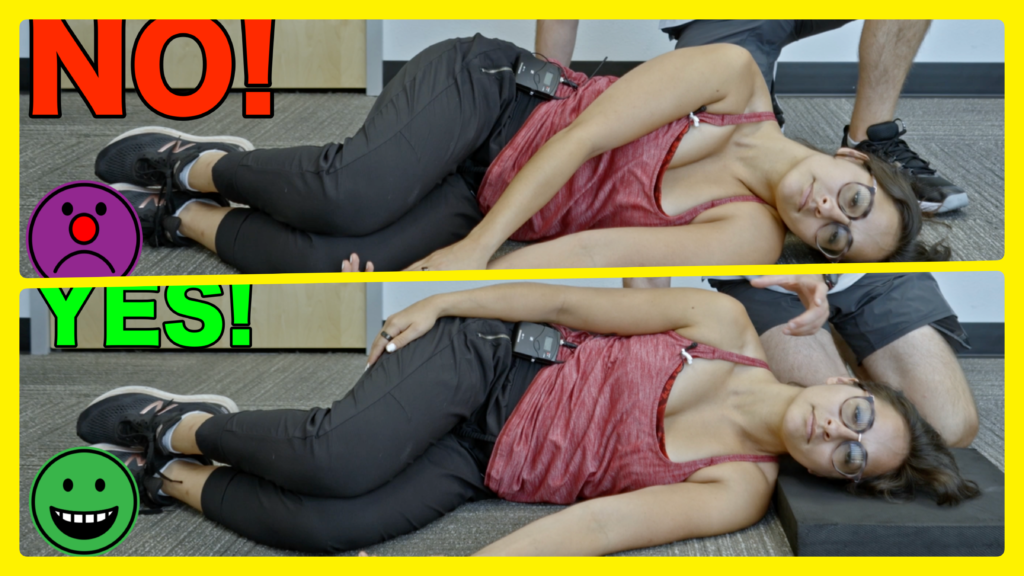
If you want to add some sauce, you can place an object between the knees (foam roller, ball), which is useful for people with wide hips. I also find using an ab mat under the abs helpful, as this helps increase the body’s anteroposterior (front and back) dimensions, allowing for space to roll into:

Which movements are best to start with? That’s what we will go into next!
Foam roller lower body roll
This roll works really well for reducing lower body tension and increasing external rotation.
Keys to this roll are:
- Nasal breathing
- Moving the leg slowly
- Minimizing back arch
Open book roll
This roll teaches you to differentiate moving the upper body between other body regions.
Keys to this roll are:
- Isolate the movement to the upper body
- Lazy upper arm
- Reach arm long
- Eyes and hand move together
Make sure to not go too far with your arm and create a pec stretch.
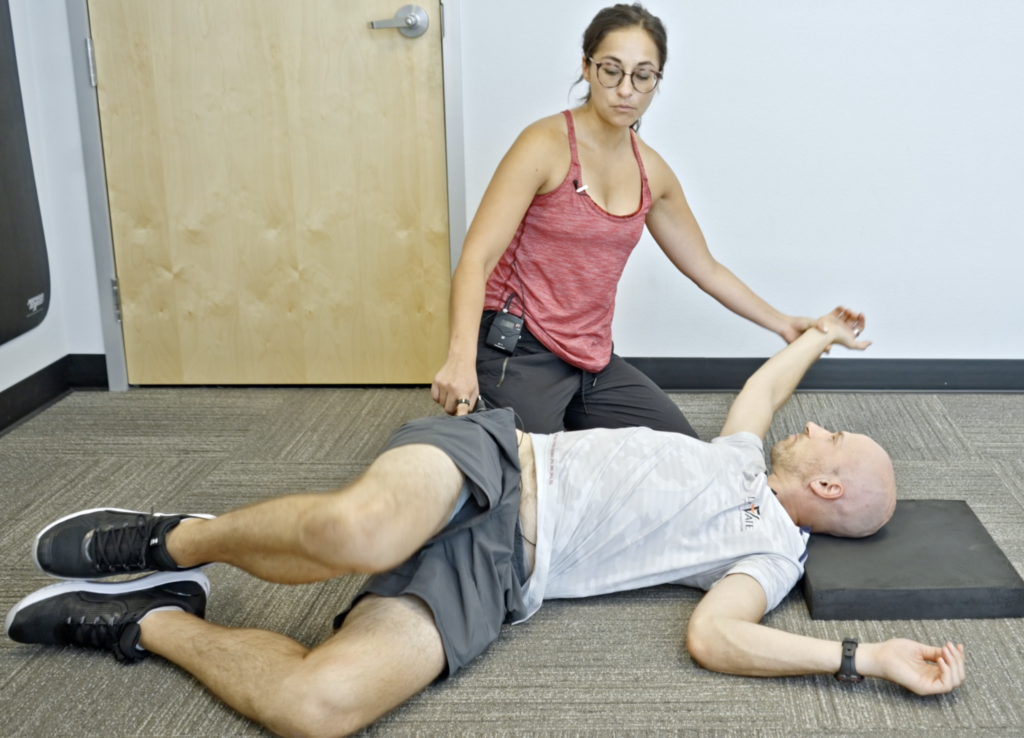
You also don’t want to sag the shoulder blade as you reach.
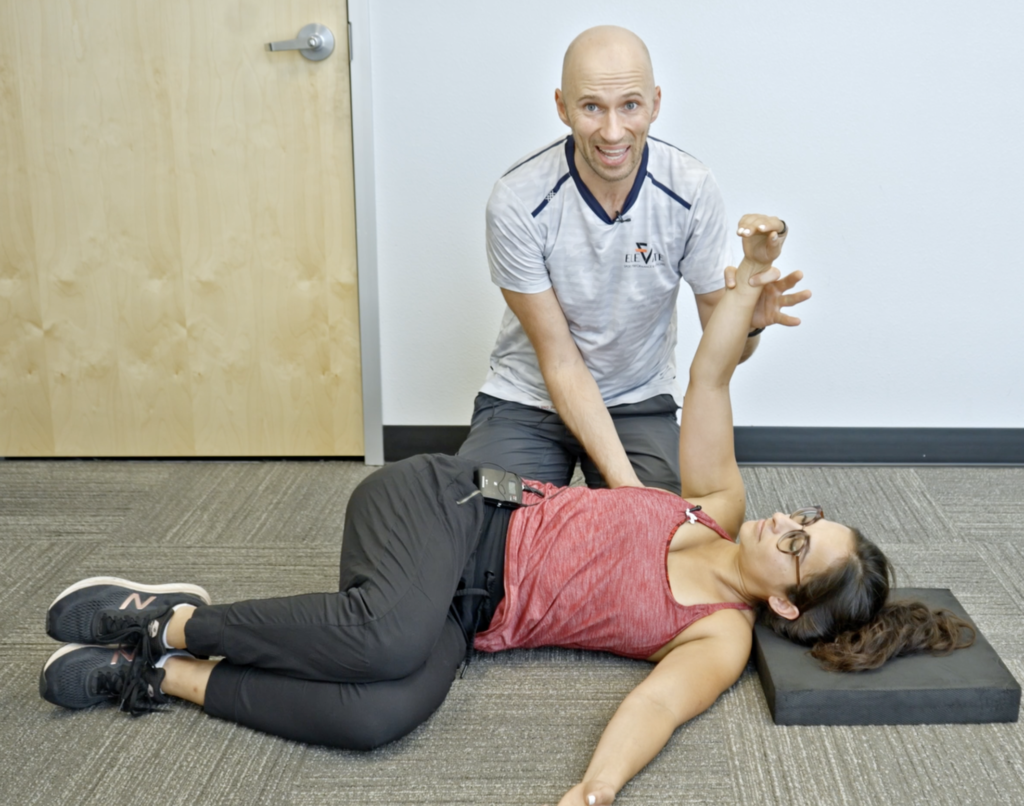
Head roll
This roll teaches neck movement with minimal tension.
Keys to this roll:
- Use enough pads under the head so the chin doesn’t fall back
- SLOWLY rock head back and forth
- Closing eyes can help
Rib log roll
This move is awesome moving the entire spine as one unit. It’s common for people to move and twist through a specific segment. This roll minimizes that strategy.
Here are the keys:
- Grip opposite ribcage to minimize shoulder blade movement
- Top leg up
- Roll as a unit
- Lead with the knee
- Minimize hip flexion
Sidelying same connect
This move right here is perfect for introducing a little bit of tension within the body, but still creating a roll. I use this a lot to improve external rotation on the flexed side (both upper and lower body).
Here are the keys
- Squeeze the block with the elbow and thigh
- Nose, chest, and zipper move as one
Why do these rolls work?
Movement in general occurs by reducing space in certain areas, and increasing space in others.
For example, when I flex my elbow, there is less space between my MASSIVE biceps and forearm, and more space near the tricep. This is normal.
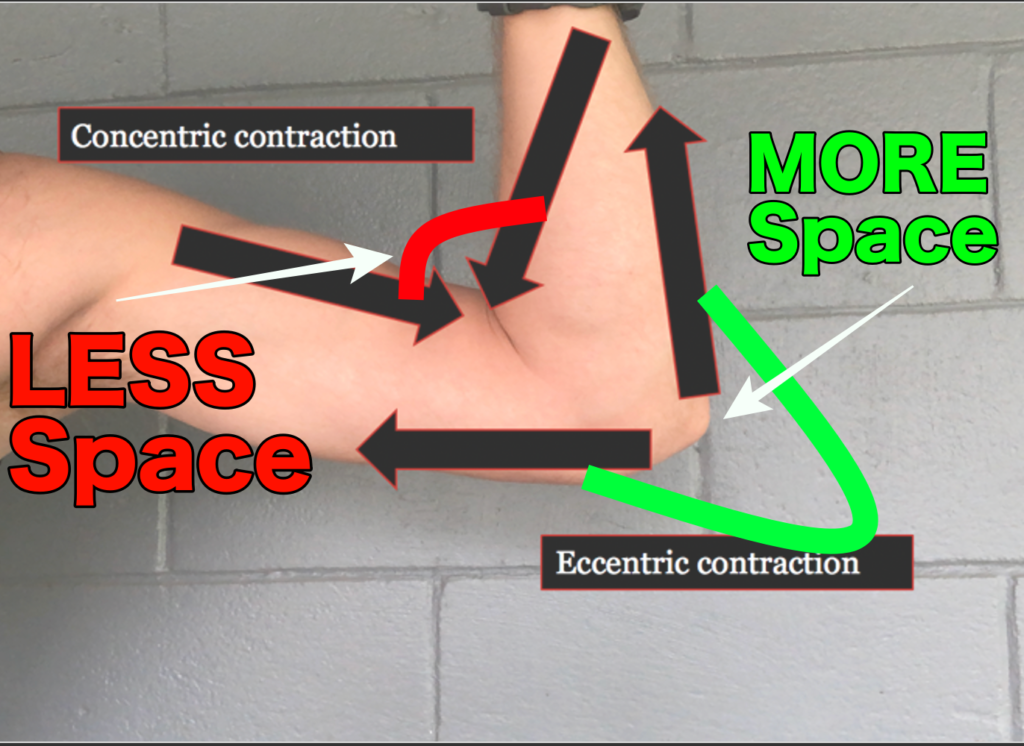
Now, we all have some movement limitations. These limitations exist because our bodies have some degree of tension at rest.
Suppose that my bicep had increased tension. This tension would limit extending (straightening) my elbow. The bicep has to reduce tension for this to occur.
The goal in this case would be to find strategies that reduce bicep tension to improve elbow extension. Perhaps this involves working on activating the triceps.
Now consider the person who has limitations EVERYWHERE. What happens there?
In this case, ALL tissues have increased tension, which limits that person’s movement capabilities. Now there is minimal space to move.
Unlike the bicep example, there is no opposing muscle that can reduce tone if ALL muscles are tense as can be. What’s the opposing strategy then?
The answer would be learning how to move without producing as much tension, which is what the previous exercises teach.
When to program these rolls
There are several times in which these movements would be useful to program:
- One presents with multidirectional restrictions
- One is stressed or needs a recovery day
- Fillers to increase work capacity in deconditioned individuals
- During pain or disease flareups
- Increased muscle guarding
Sum up
These are the strategies that Lucy and I use to reduce overall muscle tension.
To recap:
- To reduce tension, nasal breathe and move slowly, sensing minimal to no muscle activity.
- These movements work because reducing muscle tension increases available movement space
- Useful for multidirectional restrictions, deconditioned clients, flare-ups, and more
If you enjoyed this, give Lucy a follow here.
